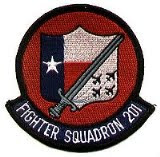
Robert White passed away peacefully in his sleep this past St. Patrick's day at his home in Orlando. He was 85.
Robert White was a retired USAF Major General. He earned his wings during WWII, and flew Mustangs in the European theater with the 355thFG until being shot down early in 1945 on his 52nd combat mission. He spent the rest of the war as a POW. After the war, he earned a degree in electrical engineering, then was called back to duty during the Korean War. In 1954 he was transferred to Edwards AFB, where he joined the test pilot program. In 1961, he was the first man to break Mach 4, then Mach 5, and then Mach 6, while flying the X-15. He also was the first man into space in a winged vehicle when he flew the X-15 to a height of 59 miles in 1962.
He spent time with the 36TFW at Bitburg AB in Germany, finally commanding the 53rdTFS. He then went to Vietnam where he flew 70 missions in the F-105 with the 355thTFW, winning the Air Force Cross.
Gen. White's commendations include the Air Force Cross, Silver Star with 3 oak leaf clusters, Distinguished Service Medal, Legion of Merit, Distinguished Flying Cross with 4 oak leaf clusters, Bronze Star, Air Medal with 16 oak leaf clusters, and a Distinguished Unit Citation with V device.
Godspeed General White ...









